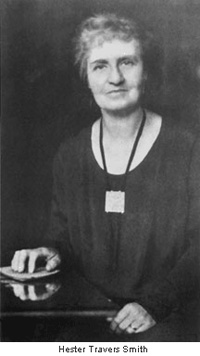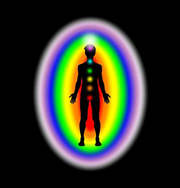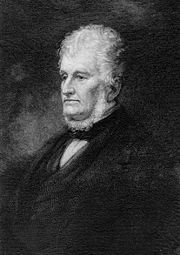|
|
|
 |
Ruling out Telepathy: “Mudder” for Mother
Posted on 22 July 2019, 8:46
It was considered “unscientific” for early psychical researchers to conclude that they were hearing from spirits of the dead through mediums. Although telepathy, or mindreading, was also considered unscientific by the fundamentalists of science, and still is to this day, it was preferred to spirits as an explanation for the messages coming through the medium. That is, the medium, must have tapped into the mind of the sitter for information. As it was not as unscientific as spirits of the dead, psychical researchers were therefore always on guard for telepathy. One such researcher was Lydia W. Allison, a member of the American Society for Psychical Research (ASPR).
As reported in the February 1925 issue of the Journal of The American Society for Psychical Research, Allison (1880 – 1959), the widow of Edward Wood Allison, M.D., arranged for an anonymous sitting with medium Hester Travers Smith while visiting London, England during June 1924. A resident of Dublin, Ireland, Travers Smith (1868-1949) was the daughter of Professor Edward Dowden, a distinguished Shakespearian scholar, and the wife of a prominent Dublin physician. She was primarily an automatic writing and Ouija board medium, sitting regularly with a small group of friends, including Lennox Robinson, a world-renowned Irish playwright, and the Rev. Savell Hicks. Sir William Barrett, a distinguished physicist and psychical researcher, was a close personal friend and also attended a number of sittings with Travers Smith, attesting to the genuineness of mediumship. Geraldine Cummins, perhaps the most famous automatist in history, was introduced to mediumship by Travers Smith, who is referred to in books by Cummins by her maiden name, Hester Dowden.

In her 1919 book, Voices from the Void, Travers Smith states that she had begun experimenting with automatism six or seven years earlier to see what it was all about and if it really was evidence of survival after death. She began with the belief that automatism was, as many scientists of the day believed, merely a method of studying ourselves – that everything coming through the board and automatic writing was coming from the subconscious. However, she came to the conclusion that there is more to automatism than the subliminal self and that disembodied souls were indeed involved, even if some of the messages were colored by the medium’s subconscious.
Allison (hereinafter “Lydia”) first sat with Travers Smith on June 27, 1924. As instructed, she brought along several articles that belonged to her husband, who had died in 1920, including a gray suede tobacco pouch. The pouch was placed close to the Ouija board pointer and Travers Smith instructed Lydia to ask questions. She first asked to whom the pouch belonged, and the board spelled out E-d-w-a-r-d. She then asked by what name Edward was called. The response came N-e-d (correct). Lydia then asked who had been recently married. There was no response. A second try and still no response. She then asked who gave him the pouch. “A-n-i-t-a” was the correct reply.
At this point, they changed from the board to automatic writing and Ned was asked where Anita had given him the pouch. “Londan” was the reply, although the second “o” in London appeared to be an “a.” However, London was the correct answer. He was then asked for his surname and “All——” was written in a scrawl. Asked for his middle name, he correctly gave Wood. Although Lydia did not ask for her name, the pencil wrote “Lydia.” They then returned to the Ouija board.
Lydia then asked Ned who had communicated with her in a sitting she had had with another medium (Gladys Osborne Leonard) not long before. “James Hyslop” was the correct reply. Hyslop, the former director of the ASPR had also died in 1920. “Whose name did he mention?” Lydia next asked, to which the reply correctly came “Prince.” (This was apparently a reference to Walter Franklin Prince, who was a research associate with the ASPR.) Lydia asked who else was mentioned and the name “Bruton” was given. That name was unknown to Lydia, although she does recall that Hyslop had mentioned a number of people unknown to her and Bruton could have been one of them. As Lydia saw it, this name was opposed to the telepathic hypothesis, since it was not a name with which she was familiar and not “on her mind.”
She next asked Ned his sister’s name and he correctly replied with A-n-n-a. When asked for his other sister’s name, he again gave the correct name, M-a-r-y. When again asked for his surname, he slowly spelled, A-l-l-e-s-n…A-l-l-i-s-n…and finally A-l-l-i-s-o-n.
Lydia again sat with Travers Smith on July 3. Travers Smith rubbed the pointer of the Ouija board against the tobacco pouch and addressing her spirit guide, Johannes, asked him to call Ned to the table. He returned with both Ned and James Hyslop. Lydia noted that Travers Smith turned her head away from the board and closed her eyes, maintaining that position for the rest of the sitting. Lydia had both hands free to take notes. She first addressed Hyslop, asking him if he knew someone who just arrived in London. Hyslop responded with T-u-b-b-y, the reference being to Gertrude Tubby, his former associate at the ASPR in New York. Lydia noted that she had just arrived the prior afternoon and was certain that no one besides herself was aware of her arrival.
There was some further communication with Hyslop but nothing of evidential value. She asked that Ned return to the board. To again test him, she asked if he remembered Gretchen. He responded that he did remember her, after which he was asked the name of Gretchen’s sister. With Travers Smith continuing to look away and with eyes closed, her hand guided the pointer to E-l-s-a, followed by E-l-s-i-e. Lydia noted that her baptismal name was Elsa but she was called Elsie.
Lydia then asked Ned if he remembered Jack and Marian and if he could give their last name. He correctly spelled M-a-c-k-a-y. She then asked for the name of her mother. The board spelled P-a-u-l-a, which was correct, although Lydia had Polly on her mind, as that is the nickname her mother went by. She then asked Ned for her mother’s nickname, expecting Polly, but the board spelled out M-u-d-d-e-r. In fact, Ned always referred to her as Mudder. As it had been some 15 years since her mother passed, she had more or less forgotten about Ned’s name for her. When she asked Ned for her other nickname, he responded with “P-o-l-l-y. Now do you think it is I? You are very amusing to me.” (hyphens omitted for clarity.)
Lydia’s third sitting with Travers Smith was on July 9. She again asked for the names of his two sisters and both Anna and Mary were named. She then asked for the name of his niece. He correctly identified her as T-h-e-l-m-a. This was the name she was looking for when she asked about someone being recently married in the first sitting. Strangely, the report ends there and there is no indication that Lydia then called Ned’s attention to the fact that Thelma had just married and if he was aware of it.
In commenting on the case, Dr. Walter Franklin Prince, ASPR Research Officer, wrote that the most surprising thing about the record is it transmission of proper names, which are usually difficult to produce. “Did the names come from spirits or from the mind of the sitter?” he asks. “I am far from thinking that a definite conclusion can be drawn from one brief case like this. But there are certain logical implications which ought to be stated.” He points out that Lydia got “Paula” when she was thinking “Polly” and “Elsa” when she was thinking “Elsie, but most impressive to him was that “mudder” for her mother’s nickname when she was expecting “Polly.” He saw this as lending itself to the spiritistic theory rather than the telepathic one.
“Finally, there is a singular fitness to the spiritistic theory in the failure of Edward to give the name of the person lately married,” Prince concluded, “though it was later given when the name of his sister’s daughter was demanded. For he would remember the name of his sister’s daughter but could not be expected to remember what had happened since his departure unless on the unreasonable assumption that spirits must know all that takes place on earth. But Mrs. Allison had the name ‘Thelma’ as definitely in mind when she asked who was married as when she asked who was the sister’s daughter. Why should telepathy between the living observe the consistencies appropriate only to a spirit consciousness?”
Michael Tymn is the author of The Afterlife Revealed: What Happens After We Die, Resurrecting Leonora Piper: How Science Discovered the Afterlife, and Dead Men Talking: Afterlife Communication from World War I.
Next blog post: August 5
Read comments or post one of your own
|
 |
Dissecting the Human Aura
Posted on 08 July 2019, 10:13
Professor Robert Hare, one of the earliest psychical researchers, identified two modes giving rise to the various spirit manifestations: “In the one mode, they employ the tongue to speak, the fingers to write, or hands to actuate tables or instruments for communication,” he wrote in his 1855 book Experimental Investigation of the Spirit Manifestations. “In the other, they act upon ponderable matter directly, through a halo or aura appertaining to the medium; so that although the muscular power may be incapacitated for aiding them, they will cause a body to move, or produce raps intelligibly so as to select letters conveying their ideas, uninfluenced by those of the medium.”

Hare, an emeritus professor of chemistry at the University of Pennsylvania and a renowned inventor, further concluded that this aura was some form of electricity or light that was beyond scientific analysis and that it amounted to essentially the same thing that German chemist Baron Karl von Reichenbach called od or odyle in his research a decade or so earlier. Reichenbach first published his findings in a series of papers entitled “Researches on Magnetism, Electricity, Heat, and Light in their relations to Vital Powers,” in the March and May 1845 issues of Annals of Chemistry after studying a number of “sensitives” – people who today might be called clairvoyants or clairsentients.
While Reichenbach focused on “mind over matter” tasks, what modern parapsychologists refer to as extrasensory perception (ESP) and psychokinesis (PK), and apparently did not hypothesize or recognize any kind of spirit involvement or intervention, Hare claimed to be in contact with spirits of the dead, including his deceased father and sister, receiving much personal information that could not have been researched by the medium, as well as limited information as to how things worked on their side of the veil. He was quick to point out, however, that most of it was beyond human comprehension.
One thing that Hare (below) did grasp is that one’s immediate place in the afterlife is determined by a sort of “moral specific gravity,” which is apparently built up during a person’s lifetime based on his or her good works or lack thereof and manifests itself in the person’s aura, which is an energy field. Hare called it a “circumambient halo” and was told that it passes from darkness to brilliance based on the degree of spirit advancement. Moreover, one cannot be dishonest with himself after death as the moral specific gravity allows the soul to tolerate only so much light. If the soul were to try to cheat and go to a higher sphere, he or she would not be able to tolerate the light there. Nevertheless, the soul can continue to advance from that point.

Hare further concluded that only a few humans are endowed with an aura that allows them to be competent as mediums and that there was a wide range of ability among mediums, only a few of them of the “higher order.”
Seemingly consistent with this moral specific gravity idea is the explanation given to Frederick C. Schulthorp during his early twentieth century astral projections or out-of-body experiences. Schulthorp was told by spirits that every thought generates an electrical impulse that is impressed upon the individual’s energy field and is stored there. Every thought, he was informed, has a specific rate of vibration and the combined vibrations over a lifetime determine the person’s initial station in the afterlife environment. “Upon entry into spirit life, a person will naturally and automatically gravitate to his state in spirit which corresponds to his acts and thoughts throughout life as reproduced by his ‘personal tape record,’” Schulthorp explained his understanding at a time before computers made this comprehensible to the average person.
Sometime in 1892, Edward C. Randall, a prominent Buffalo, New York trial lawyer and businessman, was asked by a friend to accompany him on a visit to Emily S. French, a Rochester woman who, Randall was told, had strange powers and received messages from spirits by means of the direct-voice method of mediumship. Over the next 20 years, Randall sat with French more than 700 times, recording the messages from various spirits. He pointed out that each voice had individuality and that they varied greatly, just as they do in earth life. One such voice reported: “Every thought, being material, creates a condition about us and is retained in the brain. When, therefore, anyone goes out of this life and enters the etheric, where everything, the good and the bad, is intensified beyond measure, the storehouse of the brain is opened and he is confronted with the record made. Nothing is forgotten.”
Dr. Carl Gustav Jung, the eminent Swiss psychiatrist, told of a near-death experience he had after a heart attack in 1944. “It was as if I now carried along with me everything I had ever experienced or done, everything that had happened around me. I might also say: it was with me, and I was it. I consisted of all that, so to speak. I consisted of my own history, and I felt with great certainty: this is what I am. ‘I am this bundle of what has been, and what has been accomplished.’”
While Reichenbach called the energy field od, or odyle, or odic force, other researchers called it psychic force, teleplasm and ectoplasm. It has been likened to the prana of the ancient Hindus, the vis medicatrix naturae of Hippocrates, the mana of Polynesian culture, the chi of the Chinese, the astral light of the Kabbalists, the telesma of Hermes Trismegistus, the magnetic fluid of Mesmer and the orgone energy of Dr. Wilhelm Reich.
Marjorie Aarons, a healing medium, wondered how her ability to heal worked. White Feather (probably the name of a group soul) explained it to her through the renowned medium Lilian Bailey: “Your aura is like a gigantic spider-web, pulsating with many wavelengths upon which we can transmit the magnetic flow of cosmic rays. You are the machine; we are the batteries, the electricity. Your batteries are always tuned in whenever we need to transmit cosmic power. Your hands take the great flow of magnetism. Through them the power comes streaming, but it can be received by the patient only through his aura. But remember, if the patient has only a little, thick aura, that means he is very selfish. He will be unable to receive to any great extent that magnetic flow of healing power.”
On another occasion, White Feather communicated: “There is the soul flame, the real YOU which is enveloped by a physical body. Around the soul flame is the soul aura which, when someone is spiritually awakened, is wide and shimmers with the magnetism that comes to it. Then there is a vacuum – nothing. Also, there is the outer aura…..your physical aura. As your thoughts flow through it, we see its colours change. We observe your despair and happiness.”
In his 1964 book, The Light and the Gate, physicist Raynor Johnson, Master of Queen’s College, University of Melbourne, devotes a section to his mystical friend, Ambrose Pratt. “He made no secret to me of a faculty which he had possessed as far back into childhood as he could remember,” Johnson wrote, “of seeing an aura surrounding the human form (also around some animals and trees). He considered the human aura to be partly a quasi-physical luminescence, the nature of which changed considerably with the condition of health of the individual….The faintness or brilliance, transparency or opacity, conveyed to him definite impressions. He told me that in some cases where he had known a particular disease was present, he had noticed associated changes in the aura, and he had no doubt that he could diagnose such a condition in a stranger.”
In his 1972 book, Blueprint for Immortality, Harold S. Burr, a former professor of anatomy at Yale medical school, advanced his “Electrodynamic Theory of Life,” which held that all living things are surrounded by a measurable electromagnetic field, one that has the ability to organize thoughts and experiences. He designed and devised a “voltmeter” which supposedly could predict when individuals would feel “at their best” or “below par,” and he speculated that his method might someday measure states of grief, anger and love. However, he doubted that Science would make such progress, “because Nature seems reluctant to reveal her secrets to the intellectually arrogant.”
Michael Tymn is the author of The Afterlife Revealed: What Happens After We Die, Resurrecting Leonora Piper: How Science Discovered the Afterlife, and Dead Men Talking: Afterlife Communication from World War I.
Next blog post: July 22
Read comments or post one of your own
|
|
|
|